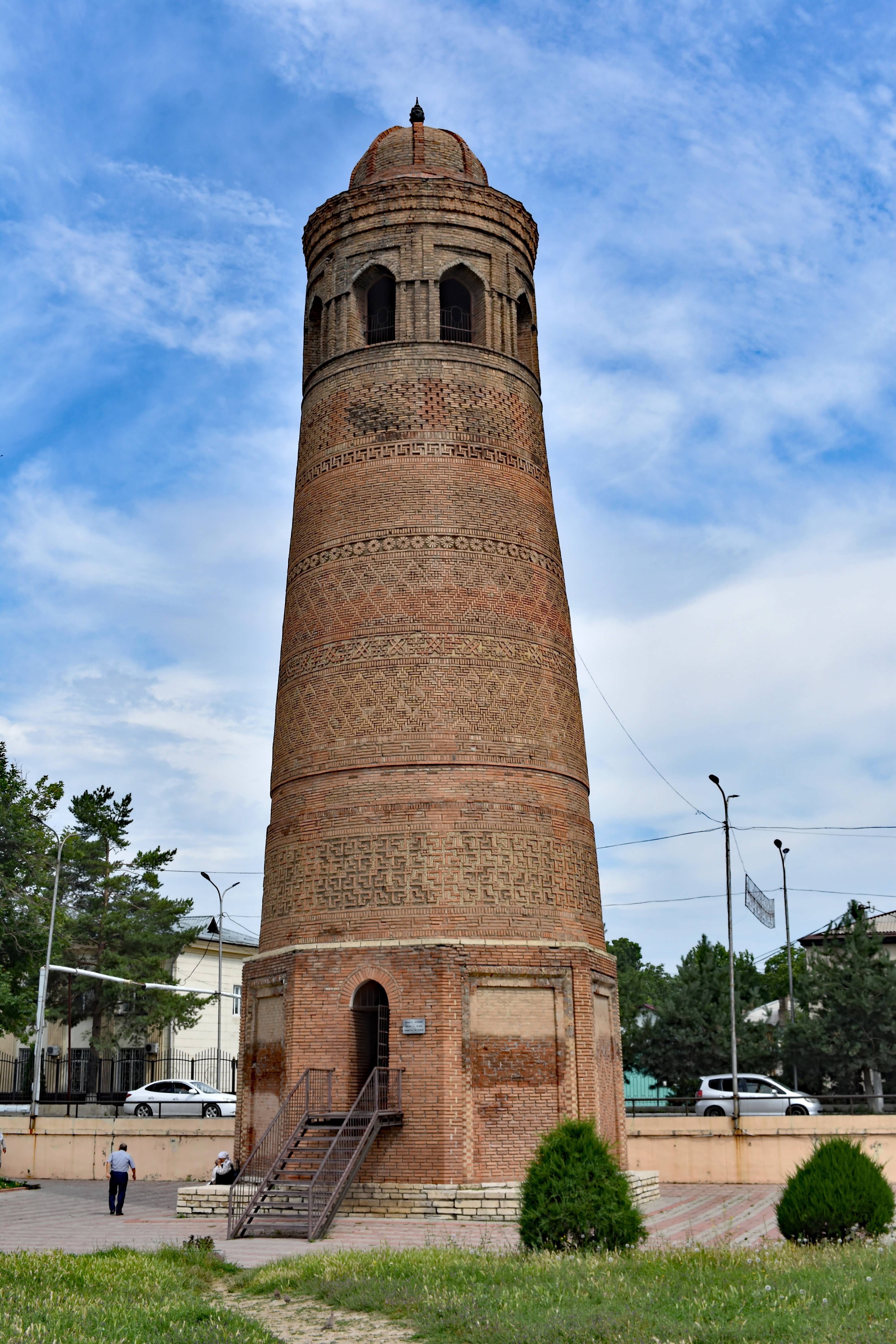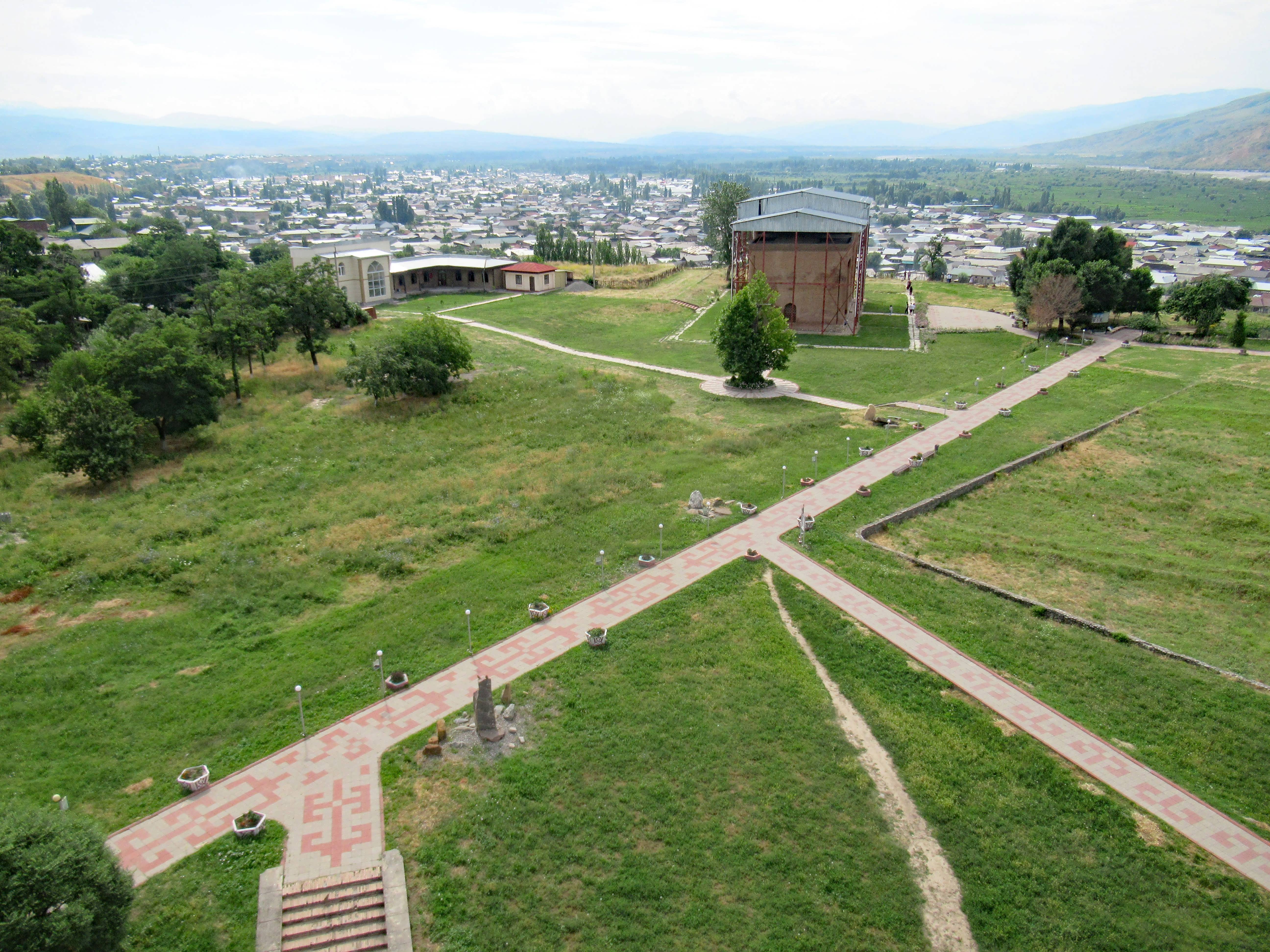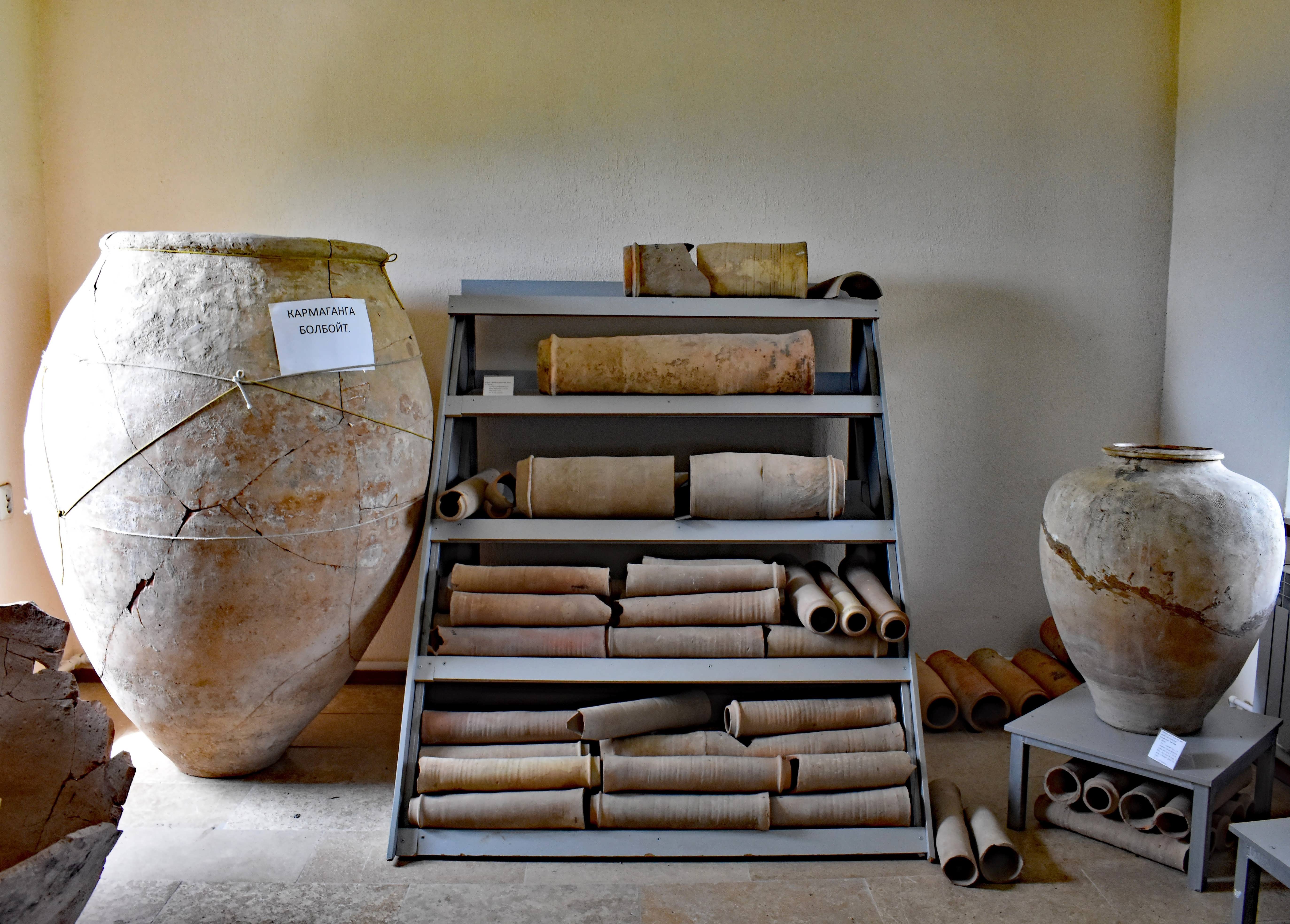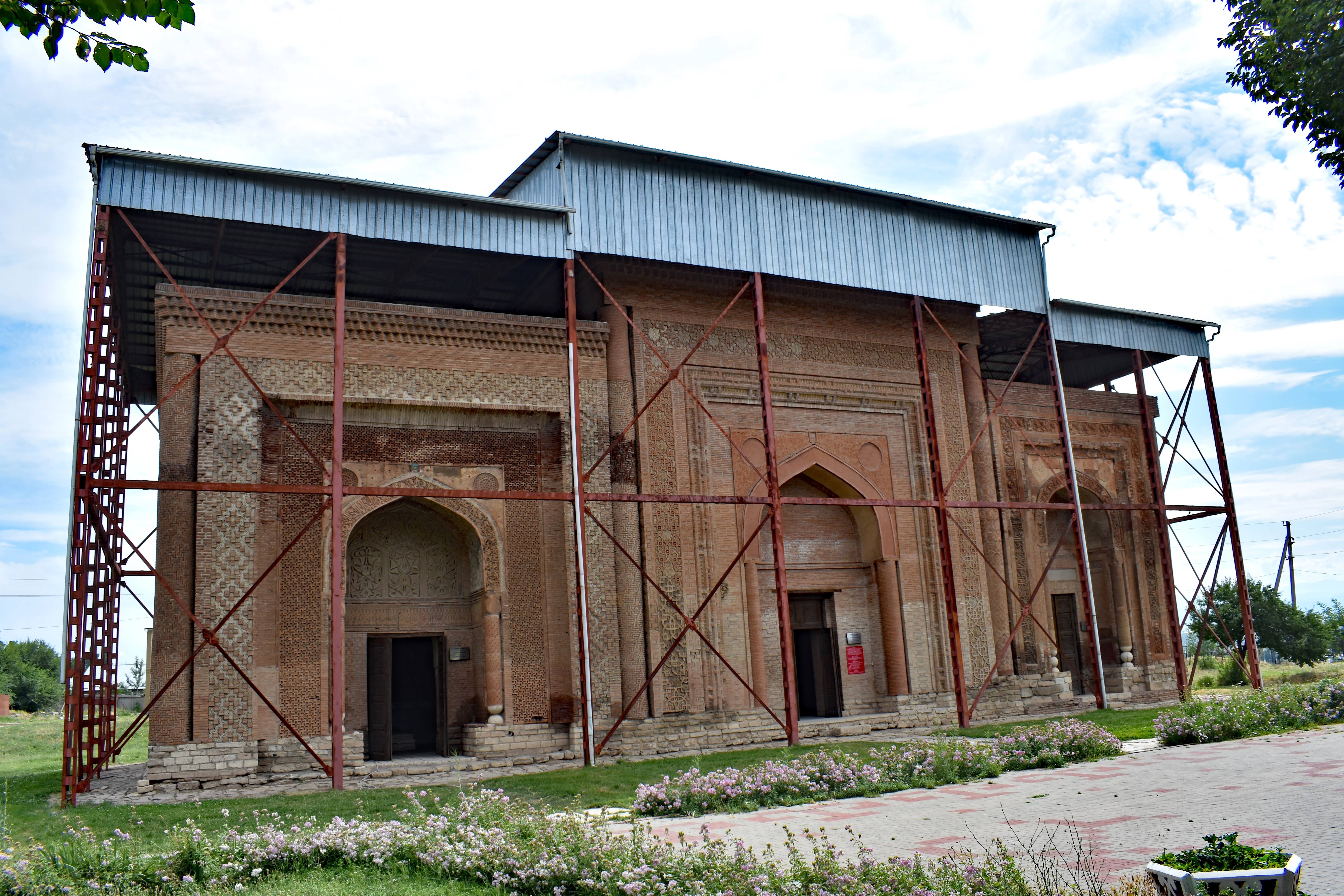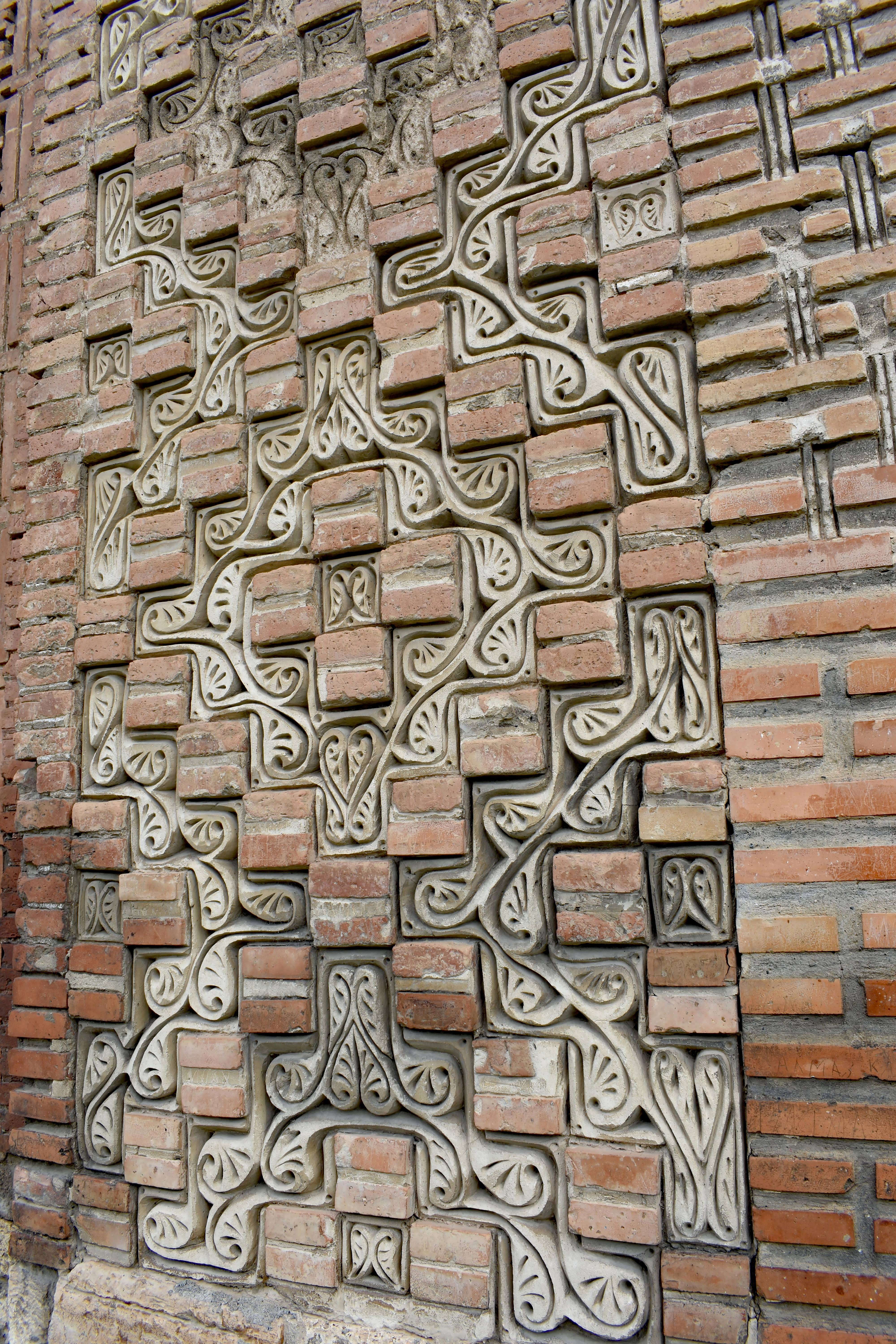Whilst driving between Kyrgyzstan’s Toktugol Reservoir and the city of Osh, we stopped at the historical city of Uzgen to visit its Historical and Archaeological Complex comprising of a minaret, museum and mausoleums.
The 12th century tapering minaret is one of three ancient minarets in Kyrgyzstan. It was originally 47m with the top part being destroyed in an earthquake in the 19th century, and now stands at only 27m. It was devoid of tiles, with the burnt bricks being formed into ornamental patterns in various bands. The 53 steep steps were dark as there was only natural daylight from two small windows and the rope lighting lining the side of the stairs wasn’t working, so our mobile phone torches were essential. Ironically when we got huffing and puffing to the top, the lighting was working. The views were good, and we could see the Pamir Mountains and Uzgen rice fields in the distance: the climatic conditions and soil composition are ideal for growing a reddish-brown rice named Devzira. Fortunately, on our way down, we only met a young boy going up as his parents sensibly waited at the bottom for us.
The simple one-room museum had artefacts found in the area, including lots of clay jars and pipes, but it was not particularly exciting. A second room was closed for refurbishment.
The mausoleum, protected with a roof and scaffolding, once again had no tiles, just beautifully decorative brickwork with geometric and floral designs. Arches led into three tombs.
According to researchers, Nasr Ibn Ali, one of the rulers of the Western Karakhanid dynasty was buried in the middle mausoleum in the early 11th century. This was the earliest, with the others being added later.
Based on inscriptions on the arch of the Northern Mausoleum or the one on the left, the ruler with the splendid name Togrul Kara Khaqan Hussein Hassan Ibn Ali was buried there in 1152. This was said to be the grandson of the guy in the middle and there were a few artefacts including headstones.
The Southern Mausoleum was inscribed with three dates: 1185 indicating the time of construction, 1186 for the burial of a representative of the dynasty, and 1187 for the death of a commander.
Whilst this was an interesting on-route diversion, it would not be worth making a special visit.
